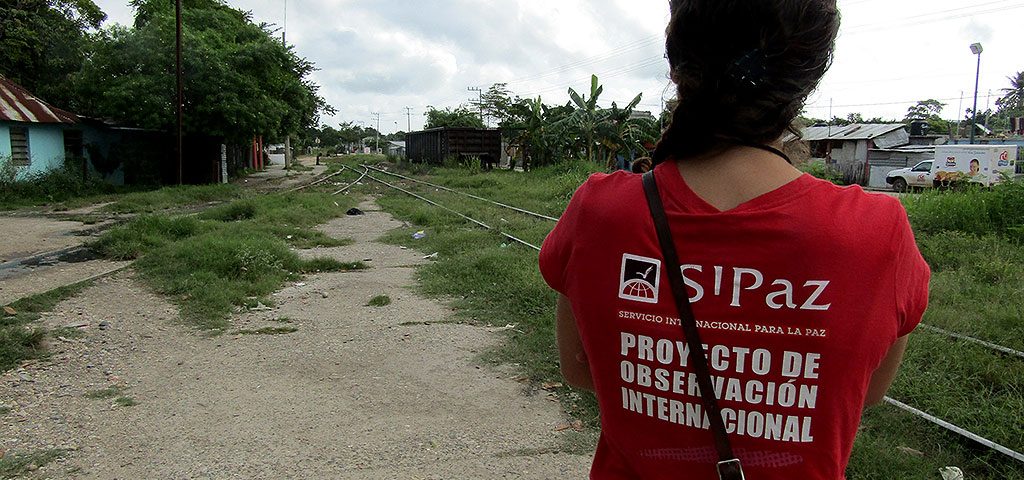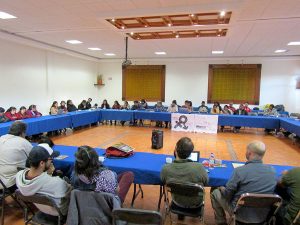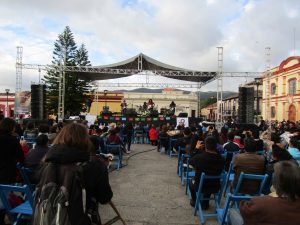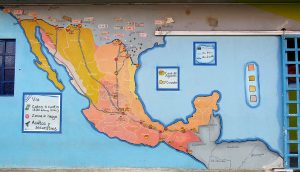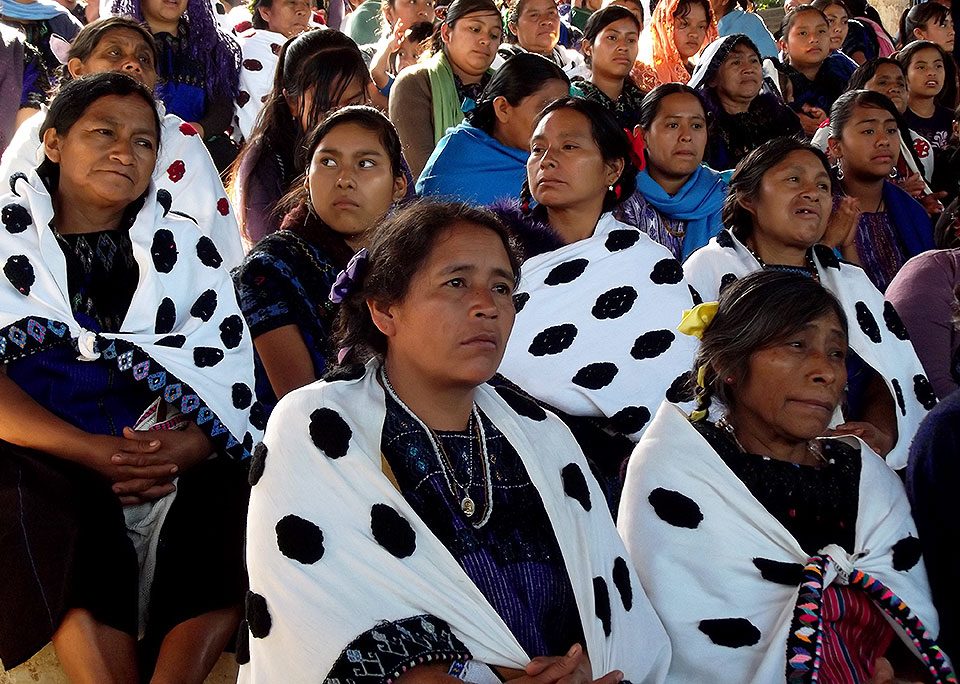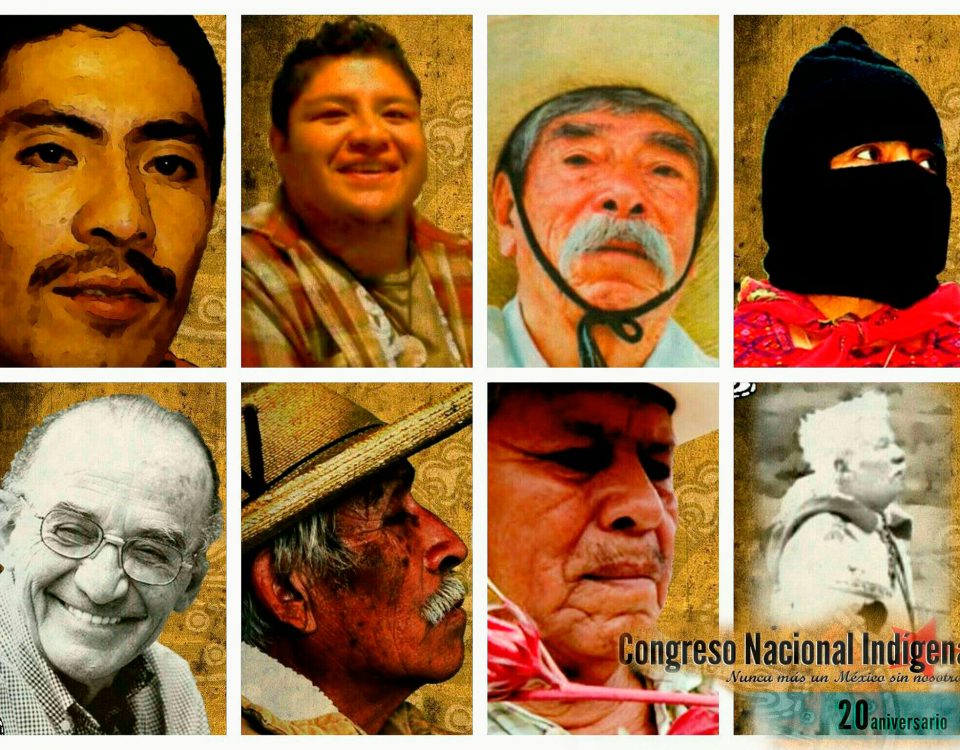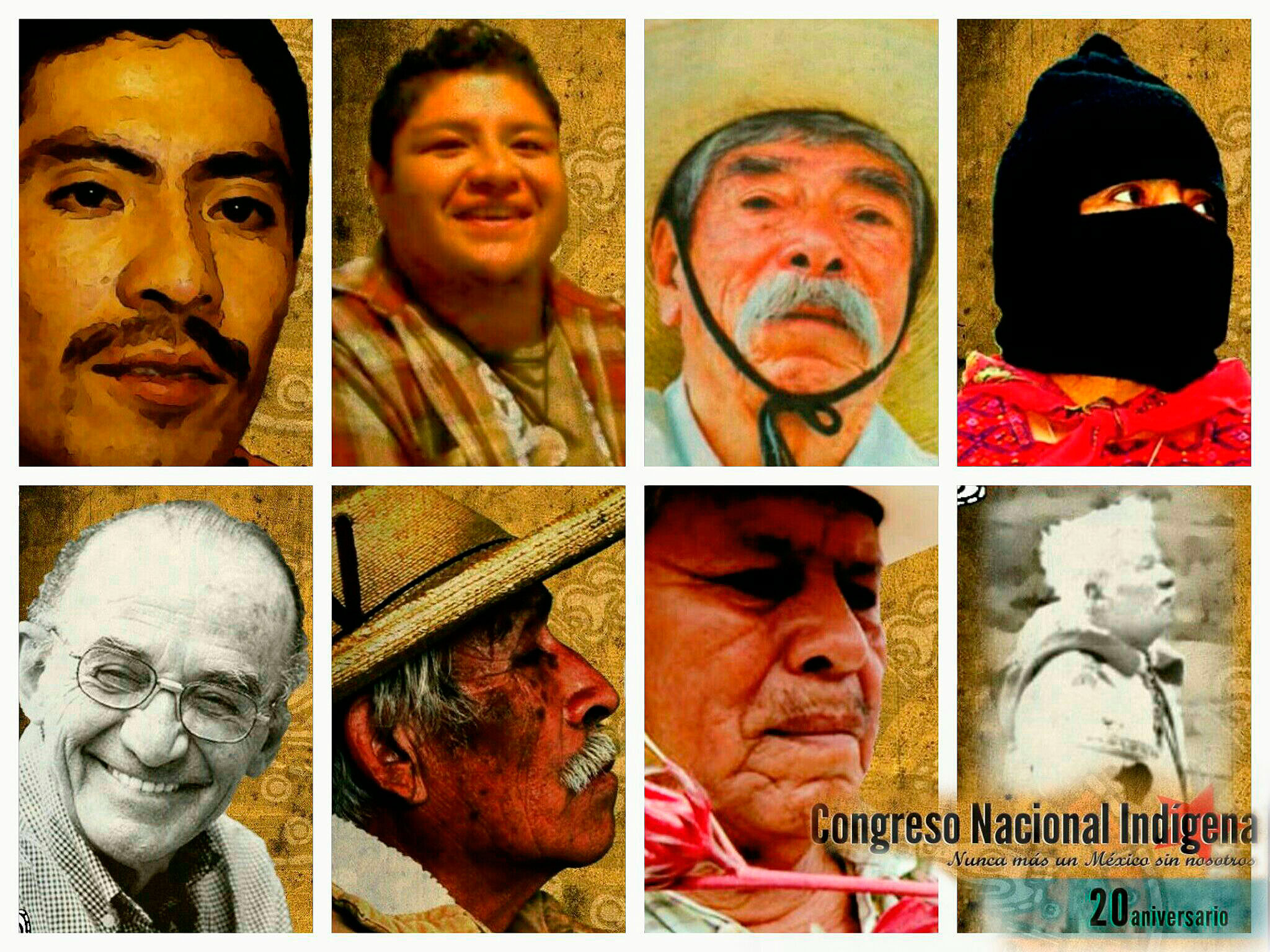
FOCUS: National Indigenous Congress Proposal – “Echoes of Hope…”
14/04/2017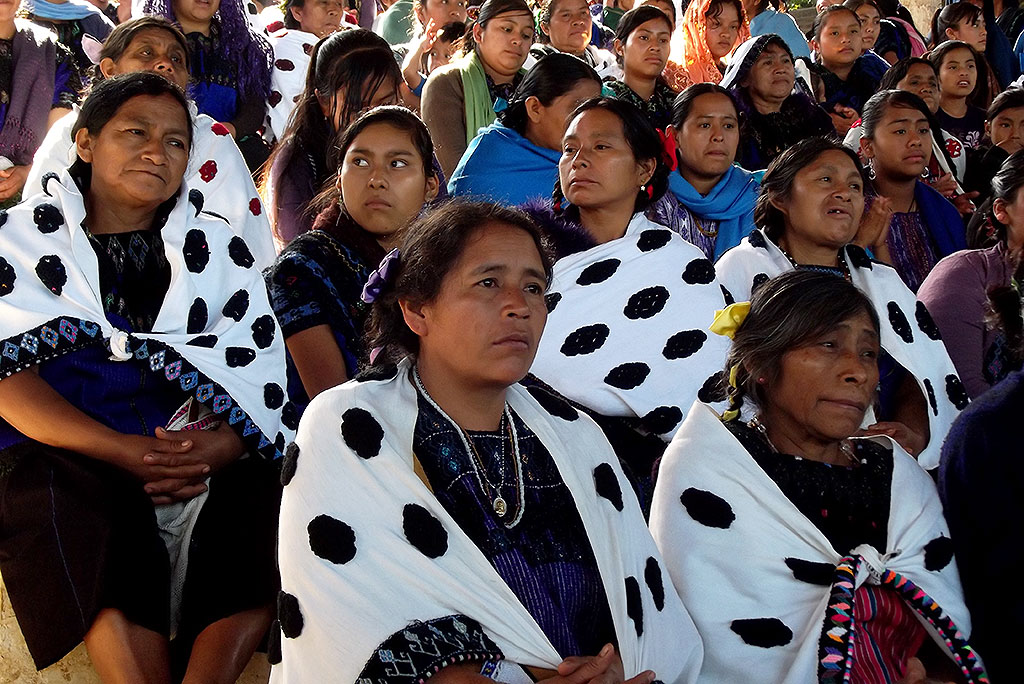
SIPAZ ACTIVITIES (From the beginning of November, 2016 to the end of January, 2017)
14/04/2017“Direct responsibility of public authorities, in collusion with organized crime and national and transnational corporations”
In November, SIPAZ had the opportunity to participate in the International Human Rights Observation Mission on the Guatemala-Mexico Border (MODH in its Spanish acronym), convened by the Cross-Border Migration and Gender Coordination Board (MTMG in its Spanish acronym) to raise awareness of human rights violations in this region.
The MTMG has existed for ten years and is made up of 30 civil and social organizations from Guatemala and Mexico that work to defend and promote the human rights of immigrants and border communities between the two countries with a special focus on women, young women, and girls, who migrate. It recognizes that the border is “a place of gatherings and exchanges of solidarity between peoples and communities”, but that, currently, systematic violations of civil, political, environmental, economic, social, and cultural rights of both local and immigrant populations prevail. It is in this context that MTMG decided to convene an International Observation Mission in order to:
- “Highlight the situation (…) recognizing that these in turn lead to generalized scenarios of forced migration and refuge, and infringe on the defense and self-management of the territories and communities.”
- “Point out structural causes and those responsible involved in such violations.”
- “Highlight and vindicate the journey of civil, collective, and community organizations and the causes that unite us in the defense of human rights, of women and of the LGBTTTIQ community [Lesbian, Gay, Bisexual, Transsexual, Transgender, Transvestite, Intersexual, Queer], of territories and migrations. ”
A group of 24 people was formed, representing civil organizations, churches, and government representatives from countries such as Colombia, El Salvador, Guatemala, Ecuador, Spain, the United States, Mexico and Canada, as well as 30 members of the MTMG, from both Mexico and Guatemala.
The MODH began on November 10, splitting into two routes, both starting their journey in Guatemala City. It covered 30 locations and 2,211 kilometers of the cross-border region. Both routes met on November 15 in San Cristobal de Las Casas, Chiapas, where the observers shared their experiences and observations. The following day, political and cultural public activities were held, also in San Cristobal de Las Casas, coinciding with the Caravan of Central American Mothers “We Look for Life on Paths of Death”, who have been searching for their disappeared daughters and sons for 12 years in Mexico along the migratory route to the United States.
In total, observers met with more than 70 organizations and groups, approximately 1,600 people, and had the opportunity to hear both problems and ways of fighting to confront them. They visited places which are characterized by their great biological, mineral, energetic, and sociocultural richness, but which nevertheless suffer historical conditions of social discrimination, territorial dispossession and economic violence, which have been deepened with the imposition of neoliberal policies in the Mesoamerican region. These regional development programs, imposed by international financial institutions and implemented by national governments, include the Regional Development Strategy of the Maya World-Southern Border, the Southern Border Integral Program and the Special Economic Zones implemented in Mexico; the Plan of the Alliance for Prosperity, implemented in Guatemala, Honduras and El Salvador; and the Mesoamerican Integration and Development Project.
As a result of the implementation of energy, mining, agro-industrial, tourism, and infrastructure projects, an accelerated dispossession of territory has been taking place, along with forced displacement, alteration of ecosystems, as well as damage to health, divisions and impacts on the way of life of campesino and indigenous communities. All these elements constitute one of the main detonators of immigration, making the survival of their existence, their culture, their way of life, and language difficult.
The immigrants’ testimonies revealed a deep human rights violations crisis with cases of threats, trafficking, forced disappearance, kidnappings, assaults, torture, murder, rape and sexual abuse, femicide, corruption, among others. In addition, a lack of access to justice is noted for those affected and the prevalence of impunity in the case of those who dare to report. On the other hand, “there are many migrants who are in jail without being given a fair trial, some are for minor crimes and others are innocent because they invent crimes, sometimes their relatives do not know they are in jail in Mexico because they do not let them communicate with their relatives.”
Despite this, since 2012, the number of Central American people who have been arriving at the Guatemala/Mexico border has seen a continuous increase and the number of women migrants has increased, accounting for almost 20% of the migratory phenomenon. The MODH observed a “common pattern of criminalization, persecution, and repression of migrant women, and persons defending human rights and territory that may end in deprivation of liberty and even murder.” Even the MODH was monitored and harassed in some places by security and intelligence agents in both countries.
The migration of members of the LGBTTTIQ community is growing exponentially due to the violence they face for their sexual identity and orientation. When they are on the road they suffer from the “migratory package” that includes trafficking, rape, payment for services with sexual abuse, and femicides. It is estimated that eight out of every ten immigrant women suffer from these types of violence, which are often hidden and even taken for granted.
In general, the MODH warned: “the hardening of the security focus to the migratory phenomenon that reflects the process of externalizing the southern border of the US is observed, and that, far from meeting the needs of the migrant population, it envisages a strategy of detection, detention and deportation of migratory flows from Central America and to a lesser extent from other countries in Africa and Asia. In both routes, a reinforced cross-border infrastructure for migratory control is reported and linkage of different entities such as the federal, state and municipal levels of the army, police and immigration authorities at checkpoints. Likewise, the active presence of North American agents in the region was denounced by the organizations visited, in direct collaboration with the migratory and security institutions.”
It is therefore not surprising that “in the majority of cases of human rights violations heard by the Mission, direct responsibility of public authorities is identified in collusion with organized crime and of national and transnational corporations acting through cooptation and corruption of the justice system, supported by the presence of private security companies and groups of armed civilians.”
In light of this, the MODH concluded that the region has the need to strengthen its social links, and it ratified the pertinence of the installation of a “permanent observatory of human rights”: “We want this effort and convergence of struggles to become a multicolored fabric, in a network of cross-border peoples and communities in Guatemala and Mexico to gradually build a critical, multifaceted and committed vision of reality, a Mesoamerican proposal capable of including the struggles of Central America and the south and southeast of Mexico.
For more information (in Spanish): Preliminary report “Luchas que fluyen por los caminos transfronterizos” (December, 2016)✕

